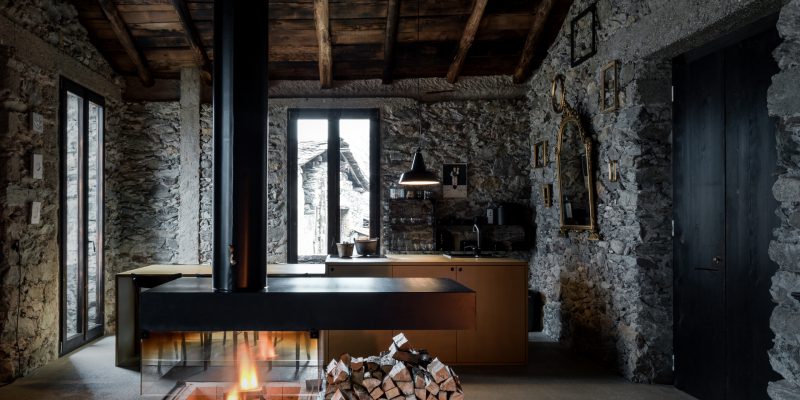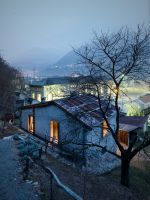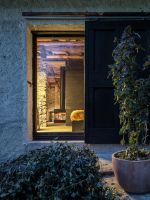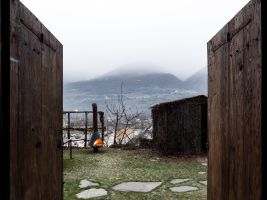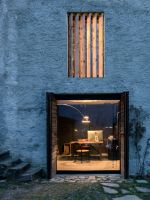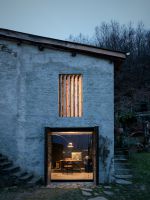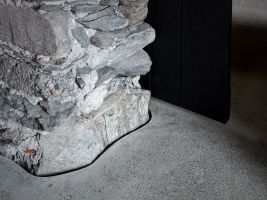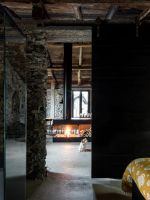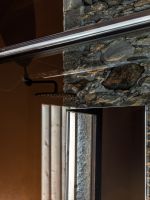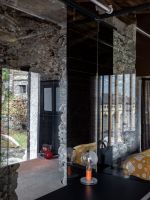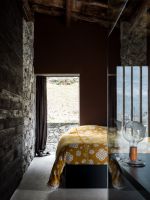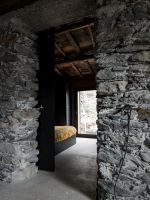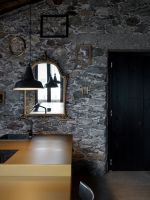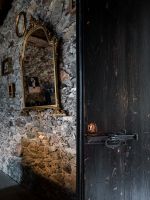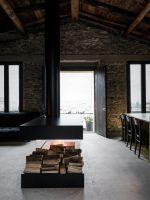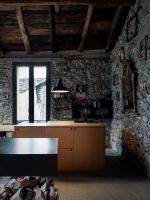In this project I had to deal with a pre-existent cattle shed/warehouse/barn from the early ‘900. Past generations built this building with sacrifices for the sustenance of their family, so to me it was necessary to take this into account, preserving as much as possible both from the point of view of materials and form. I believe that in the historical moment we are experiencing there is a need to revive buildings like this, to renew their history, to give back “life” to the materials of the past.
On the external façades the plaster was kept as it was, while inside it was completely removed from the walls, bringing back to light the original stone. About the roof, both the supporting structure and the chestnut wood paneling and the covering layer in rusty corrugated sheet, have been maintained through recovery and restoration.
All the openings have been respected by inserting wooden frames. The floor was made of concrete without any covering in order to re-propose the typical floors of the houses of the past. As for the lighting system, the same was done simply using simple cables to which the lights switches were connected.
On the ground floor, in the portion of the building used as a stable for the animals, a tavern was built while the warehouse was transformed into a studio. On the first floor, in the original hayloft, a kitchen and a living room have been created, while the bedroom and the bathroom have been made into the old storage room.
As in other projects, I gave room to the artisans work, which I consider fundamental to the growth and development of traditions. I have therefore designed a large part of the furnishings, making them custom-made: both the kitchen block and the fireplace were made of painted iron. The kitchen block was then completed with carpentry works (drawers and doors); also the bolts of the entrance doors have been commissioned to a skilled and expert locksmith. I describe this project as a recovery, because part of the furnishings (chairs, armchairs, wardrobes, chandeliers) have been “saved” from destruction, restored and re-used.
